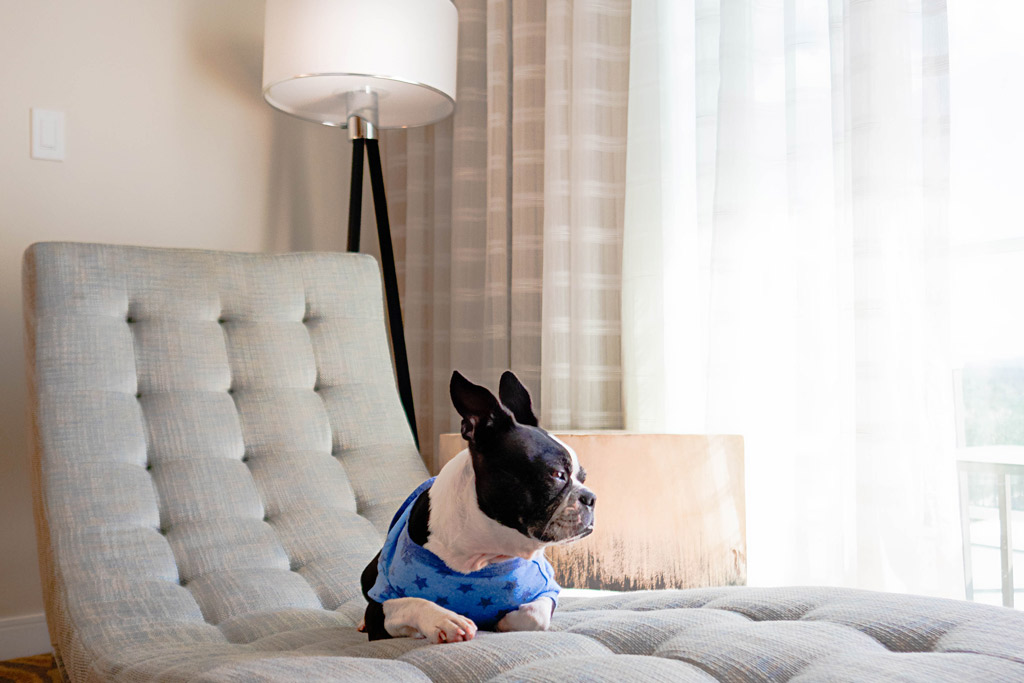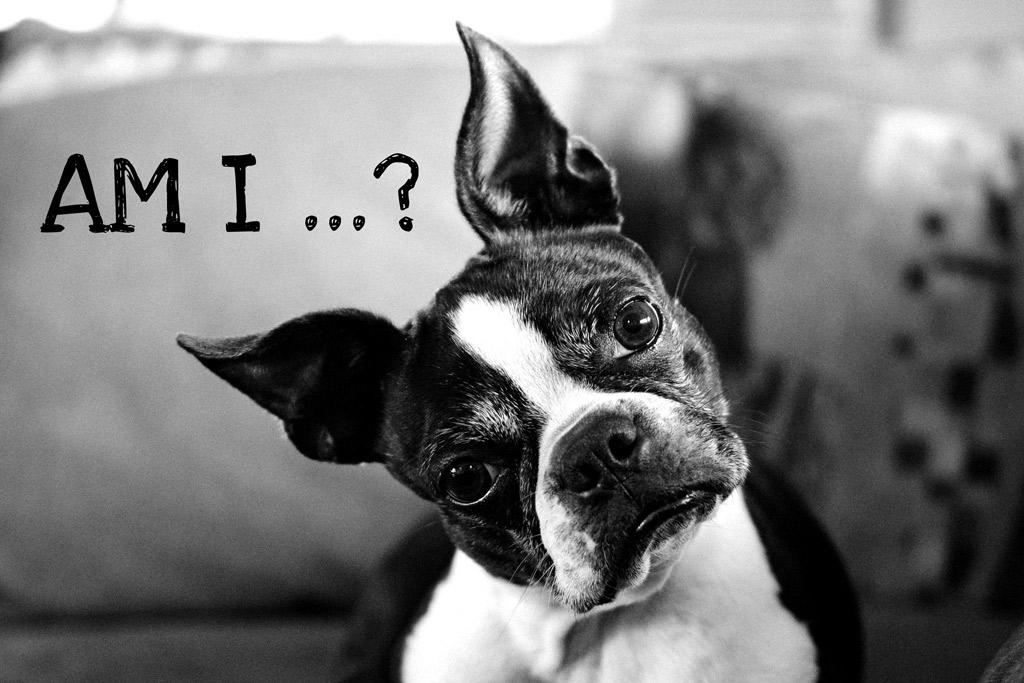
In a 2019-2020 pet owners survey, of the 84.9 million homes in the United States (that’s 67% of U.S households) reported to own at least 1 pet, 63.4 million homes had dogs (source).
That means for every 10 households with a pet in the U.S, 7 are dog owners!
Unfortunately, dogs can also be a cause of allergic reactions (and development), and the aggrevation of asthma. This is why hypoallergenic dog breeds (dogs considered to be less likely to trigger allergies) are sought after.
Are Boston Terriers hypoallergenic? No, Boston Terriers are not considered hypoallergenic as they themselves usually suffer from allergies that can give them itchy skin, causing them to scratch and shed more hair, which spreads dander (dead skin cells) – the main cause of pet allergies in people.
There are no truly hypoallergenic or non-allergic dog breeds.
The concentration and levels of allergen (what causes allergic reactions) can also vary quite a lot, depending on the individual dog and not just by breed (source).
But before you give up hope on companionship with a furry friend…
Let’s find out more about the Boston Terrier Vs the hypoallergenic dog, what matters if you suffer from allergies, and what you can do to minimize dander.
Are Boston Terriers Hypoallergenic?
According to the AKC, hypoallergenic dogs breeds have a non-shedding coat that produces less dander. Apart from the saliva and urine, what causes most pet allergies in humans is dander, which is attached to your dog’s hair.
Just as every dog is unique (and there are no non-allergenic dog breeds), each person reacts differently to every dog or breed depending on the allergy, which can range from mild to severe.
So, if you are considering a Boston Terrier and you’re not sure, but are concerned, about being allergic, try and get exposed to that particular dog first for a couple of days. This is the most effective and personalized way to see if you have any allergic reactions.
I have been raised with dogs, had multiple dogs and cats… and ended up being allergic to pet dander – as diagnosed from multiple medical tests.
However, I don’t react the same to every dog; I’ve found that it depends on the dog and the environment (continue reading to know what I’m talking about). And this allergy hasn’t stopped me from having and caring for dogs either.
Even if Boston Terriers are not hypoallergenic dogs, they shed minimally and are not prone to drool. These two characteristics make them a breed to consider amongst the short-haired breeds.
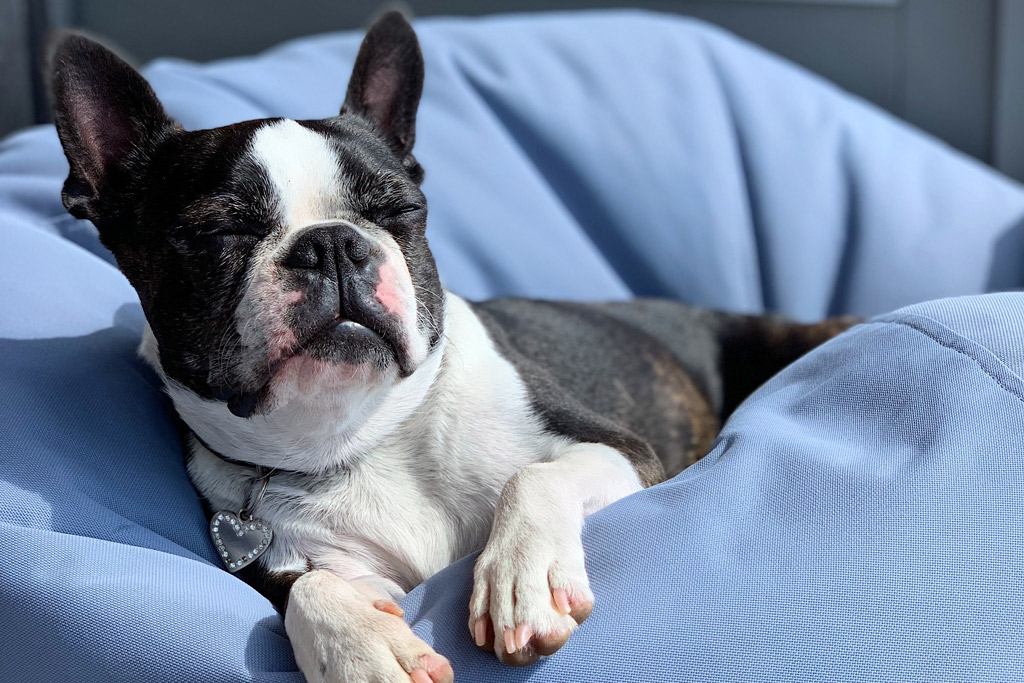
Allergic Dog Owners
There are many attractive reasons for owning a pet dog, such as emotional benefits and improved physical and mental health. Studies also show that pet ownership and companionship:
- Reduces stress.
- Lowers blood pressure.
- Helps to prevent heart disease.
- Helps to fight depression, and therefore lowers one’s healthcare costs.
As much as 10% of the U.S. population is allergic to dogs. Plus, 10%–20% of the population worldwide is allergic to dogs and cats. This comes from the American College of Allergy, Asthma, and Immunology.
So if you want a dog but you are allergic or/and symptomatic (have allergy attacks)… you are definitely not alone!
What Causes Dog Allergies
Dog allergens have been identified in dander, coat, hair, saliva, and urine.
Dander is one of the main allergens that cause irritation to allergy sufferers.
Dog dander is pieces of skin that have flaked off from your dog. It's a common cause of allergic rhinitis, commonly known as hay fever.
The most common reactions to dog dander are:
- Itching.
- Sneezing.
- Congestion.
- Nasal swelling.
- Asthma and rashes.
Your dog’s coat can also carry other indoor allergens (like dust) or outdoor allergens (like pollen). This fact can add to your allergic reaction.
However, when you can introduce and maintain a protocol to remove your dog’s dander in your home, you can reduce the irritation you might get.
7 Steps to Eliminate Dog Dander at Home
Once you have been exposed and know how your Boston triggers an allergic reaction…
Reducing dog dander in your home could help get and keep your Boston Terrier while living with your dog allergies.
Follow these 7 simple steps to eliminate dog dander at home:
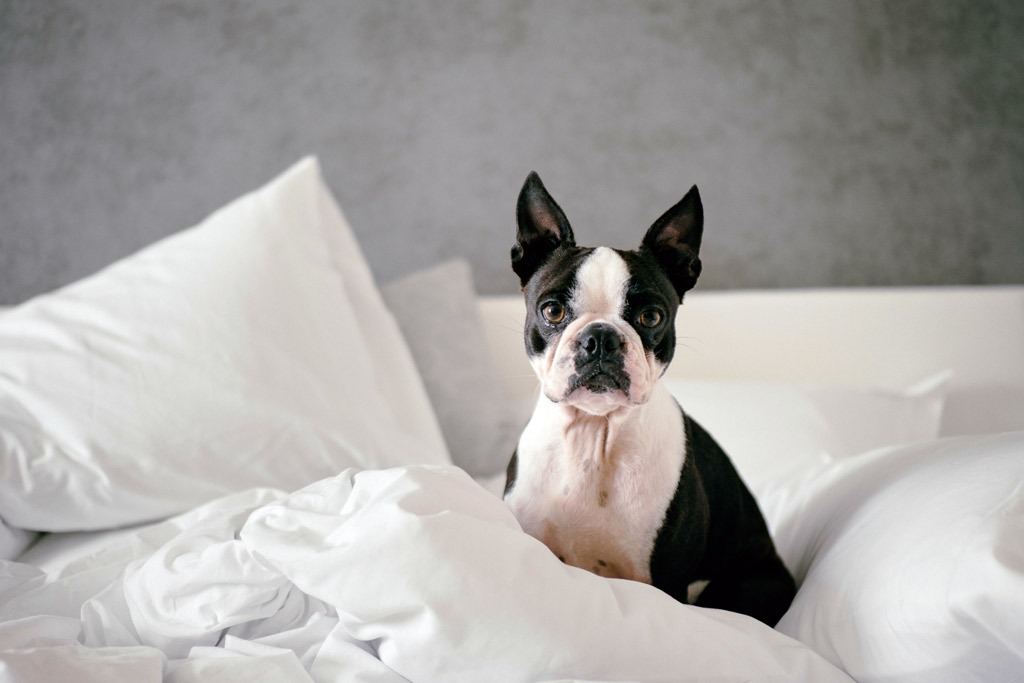
#1 – Set Up a Regular Grooming Ritual
Brush your Boston Terrier’s coat every week to remove dead hair and dander.
I would recommend you do this in the garden or outdoors to avoid the allergens spreading inside your house. Otherwise if done indoors, then vacuum after you are done.
Bath your dog when they get smelly or dirty. Although regular baths can remove dander from your dog’s skin, they can also dry the skin, which will result in more dander.
How Often to Bathe a Boston Terrier? will provide the step by step guide to bathing your dog and shampoo choices.
However, depending on how your reaction or tolerance, you could also take your Boston to the groomers to avoid the exposure to dander.
#2 – Keep Bedrooms Off-Limits for Your Dog
When it comes to letting your dog wander around the whole house with no restrictions or boundaries, I find this fosters undesirable effects.
In fact, your dog has no need for it and it helps to teach your pooch to stay calm when you are out of sight (in your bedroom, for instance).
This tip has a great effect on dog allergy sufferers. Even if you are not symptomatic, keeping your dog away from certain rooms helps.
The goal is to limit your daily exposure to possible allergy triggers.
#3 – Remove Dog Hair Trapping Items
As an extension to step #2, remove, contain, or keep out of reach any hair (and dander) trapping items from your dog, like:
- Carpets.
- Cushions.
- Blankets, etc.
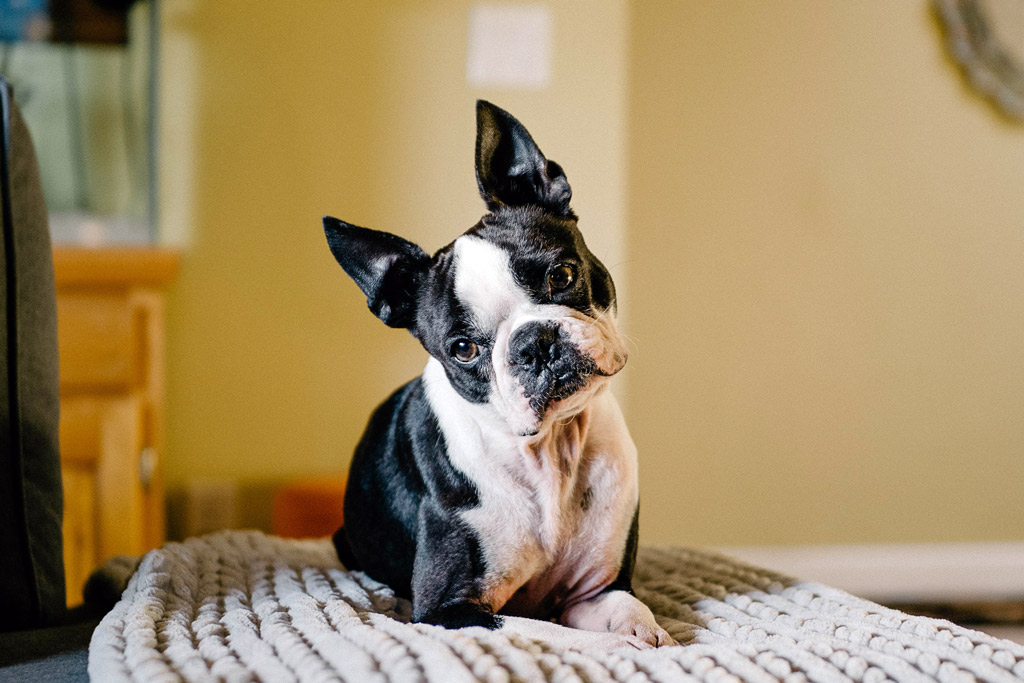
#4 – Vacuum and Dust Your Home Weekly
Regardless if you are allergic or not, weekly cleaning is very common (and necessary) for dog owners.
Vacuum weekly to remove hair and dander on the floor. Going for a vacuum cleaner specific for pets like Dyson Animal will often get you better results than regular ones.
Also, follow up with a good dusting.
If you have a Boston, the chances are hair and dander are everywhere.
Your weekly cleaning schedule can also include washing your sofa cushion covers! Bostons are known for their snuggling habits. So if your pooch is allowed on the couch (hopefully made of leather, where hair doesn’t get attached), consider washing blankets and covers.
#5 – Wash Your Dog’s Bed Frequently
Your dog’s bed is the one place that will be highly covered with hair and dander.
If you can, you should wash the bedding weekly.
Also, you can wash it when you are planning to give your pooch a bath, so your Boston terrier can snuggle into a clean bed afterwards.
#6 – Maintain Your Dog’s Coat Health with Supplements
You can maintain your dog’s coat health with natural dog supplements and remedies.
The best dietary supplements for the health of your dog’s skin and coat are those that contain omega-3, especially if they are made from marine oils, such as krill oil.
Coconut oil also improves skin health and clears up conditions like:
- Flea allergies.
- Eczema.
- Itchy skin.
- Contact dermatitis.
Coconut oil is also a rich source of lauric acid, which moisturizes dry skin and gives your dog’s coat a shiny gleam.
#7 – Invest in an Air Purifier
The final step in cleansing your house of dog dander is to buy an air purifier.
You can place it in the area your dog is likely to spend most of the day. Plus, changing the air filter monthly will reduce dog dander from spreading around your home.
